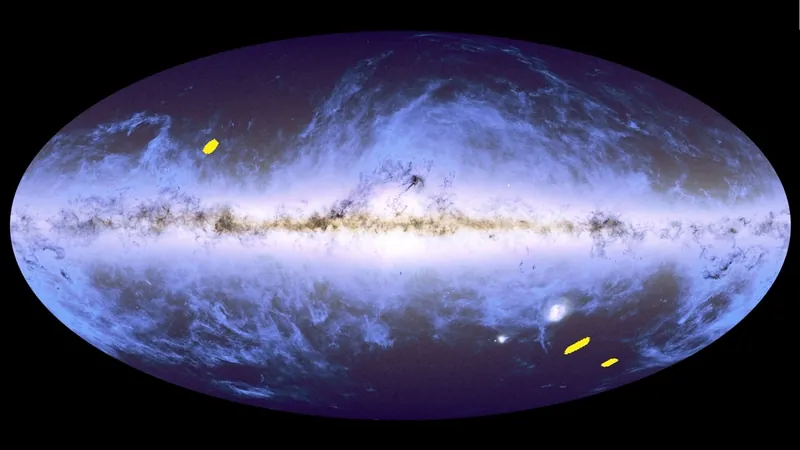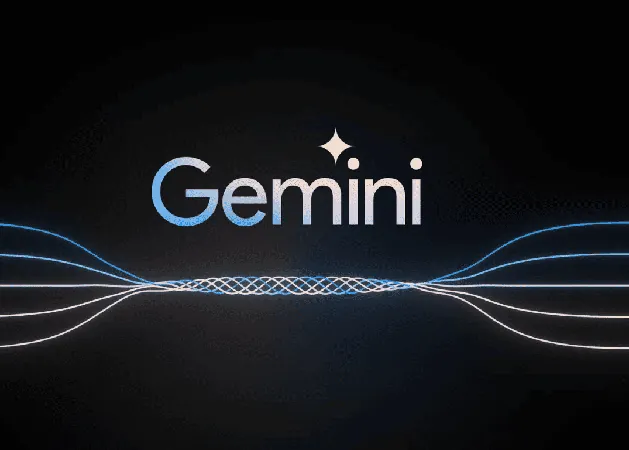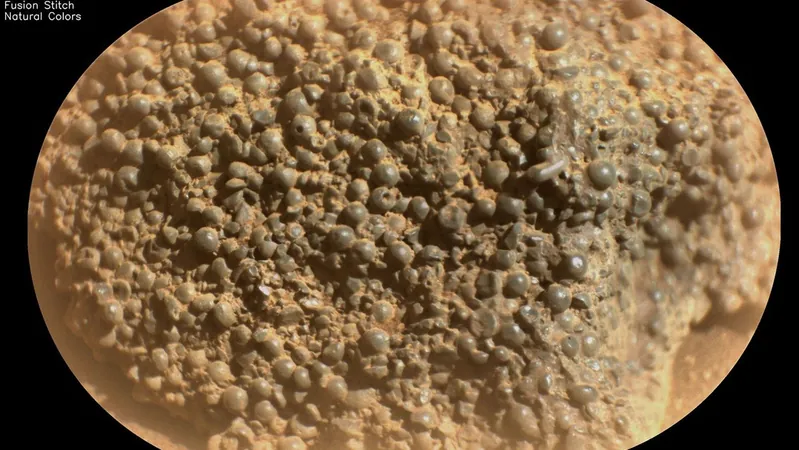
Astronomers Unveil a Stunning New Trove of Galaxies: Could They Solve the Universe's Greatest Mysteries?
2025-03-26
Author: Mei
A Groundbreaking Space Mission
A groundbreaking space mission aimed at crafting a three-dimensional map of the universe has just delivered its first jaw-dropping dataset. The data reveals a cosmic ocean teeming with galaxies of every imaginable shape and size, illuminating a dark expanse filled with enigmatic rings of starlight and astonishing supermassive black holes.
The Ambitious Agenda of Euclid
The mission is spearheaded by the European Space Agency's Euclid telescope, which has an ambitious agenda: to unravel the unseen forces that bind the cosmos together while simultaneously driving it apart. Over the next six years, Euclid plans to observe billions of galaxies, providing crucial insights into the mysterious fabric of reality.
Incredible Initial Findings
In its very first week of observations conducted in 2024, Euclid astonished scientists by identifying a staggering 26 million galaxies and a multitude of other perplexing astronomical phenomena. "It’s absolutely mesmerizing," states Carole Mundell, an astrophysicist and director of science at the European Space Agency. "The beauty of these images takes us on a journey into the depths of the cosmos, demonstrating the extraordinary engineering behind this mission."
Potential Mysteries to Unravel
So, what kinds of mysteries could Euclid's cutting-edge data potentially unravel? Two critical questions have plagued astrophysics for decades: the enigmatic nature of dark matter and dark energy, which collectively constitute about 95% of the universe. Dark matter, an invisible form of matter, binds galaxies and stars in ways that gravity alone cannot account for. Meanwhile, dark energy is the mysterious force responsible for the accelerating expansion of the universe; recent observations suggest that its influence may be waning over time.
Mapping the Universe
As scientists cannot directly detect these elusive components, they are instead mapping the universe by examining the shapes, motion, and positions of the countless galaxies within it.
The Revolutionary Design of Euclid
"This mission isn't just about pretty pictures," emphasizes Adam Amara, an astrophysicist and chief scientist at the UK Space Agency. Euclid's design focuses on three critical factors: wide-field observation, high-resolution imaging, and extreme sensitivity, allowing it to capture even the faintest starlight. "For the first time ever, we have a telescope that delivers all three capabilities simultaneously," says Mundell, highlighting Euclid's revolutionary nature.
Instruments of Discovery
The telescope employs three key instruments to achieve its ambitious goals, including a four-foot-long telescope that captures light and separates it into visible and infrared portions using a prism-like filter. Its VISible instrument boasts a remarkable 600-megapixel resolution—forty times that of most modern smartphones—allowing it to identify billions of galaxies from unprecedented distances.
Remarkable Progress
Remarkably, Euclid has already surveyed more sky than the Hubble Space Telescope did in 25 years. The second instrument, the Near-Infrared Spectrometer and Photometer, can capture infrared light and measure the distance of galaxies from Earth, paving the way for a comprehensive three-dimensional mapping of the universe as more data becomes available.
A Cosmic Time Machine
With the universe estimated to be 13.8 billion years old, Euclid's advanced capabilities enable it to observe galaxies that formed as far back as 10.5 billion years ago. "In this way, Euclid acts not only as a dark universe detective but also as a genuine time machine," Mundell affirms.
Extraordinary Discoveries
Among the extraordinary discoveries made by Euclid are numerous quasars—galaxies with exceptionally luminous supermassive black holes at their cores. "The clarity of Euclid's images is about five times that of ground-based telescopes, providing scientists a whole new perspective on galaxies," notes Mike Walmsley, a machine learning researcher affiliated with the Euclid Consortium.
The Power of Gravitational Lensing
One notable phenomenon observed is gravitational lensing, wherein the light from a distant galaxy becomes distorted as it passes near a massive object, such as a dark matter-heavy galaxy. This effect can expose remote galaxies that might otherwise remain hidden. Before Euclid, only 1,000 strong gravitational lenses were identified after decades of observations. In just a few days, Euclid has already uncovered 500, which is truly remarkable.
Insights into Dark Matter
Euclid's imaging of a galaxy known as NGC 6505 has revealed an intriguing gravitational lens called an Einstein ring, whereby light forms a circular shape around a distant object. These powerful lenses provide valuable insights into dark matter, revealing the potential presence of this mysterious substance within foreground galaxies.
Looking Ahead
Over the next six years, scientists anticipate Euclid will discover hundreds of thousands of strong lenses in addition to numerous weak gravitational lensing events.
The Role of Artificial Intelligence
Given the overwhelming data generated, the Euclid team recognized the need for assistance from modern technology. Enter artificial intelligence. To efficiently classify the vast number of galaxies, a program named ZooBot has been employed. Following initial assessments by around 10,000 volunteers to categorize galaxy images by shape, ZooBot was trained on this data and unleashed on Euclid’s fresh observations.
Accelerating Scientific Progress
"Reviewing each galaxy manually would take 150 years," explains Walmsley. However, ZooBot has already processed more than 380,000 galaxies in record time, significantly accelerating scientific progress.
A Data Deluge
The influx of data is staggering, with Euclid generating over 100 gigabytes of information daily. By the end of 2026, more than two petabytes of observations—equivalent to 31 years of nonstop high-quality streaming video—will be made publicly available.
Transforming the Cosmos
As the famed author Douglas Adams once wrote, "Space is big. You just won't believe how vastly, hugely, mind-bogglingly big it is." True to form, Euclid is transforming this vastness into a vibrant cosmic tapestry filled with astonishing galaxies.
Filling in the Sky
"There’s only a finite amount of sky," Amara reflects. "And at last, we're beginning to fill it in." The mysteries of the universe may soon become a little clearer, thanks to the remarkable efforts of the Euclid mission.






 Brasil (PT)
Brasil (PT)
 Canada (EN)
Canada (EN)
 Chile (ES)
Chile (ES)
 Česko (CS)
Česko (CS)
 대한민국 (KO)
대한민국 (KO)
 España (ES)
España (ES)
 France (FR)
France (FR)
 Hong Kong (EN)
Hong Kong (EN)
 Italia (IT)
Italia (IT)
 日本 (JA)
日本 (JA)
 Magyarország (HU)
Magyarország (HU)
 Norge (NO)
Norge (NO)
 Polska (PL)
Polska (PL)
 Schweiz (DE)
Schweiz (DE)
 Singapore (EN)
Singapore (EN)
 Sverige (SV)
Sverige (SV)
 Suomi (FI)
Suomi (FI)
 Türkiye (TR)
Türkiye (TR)
 الإمارات العربية المتحدة (AR)
الإمارات العربية المتحدة (AR)